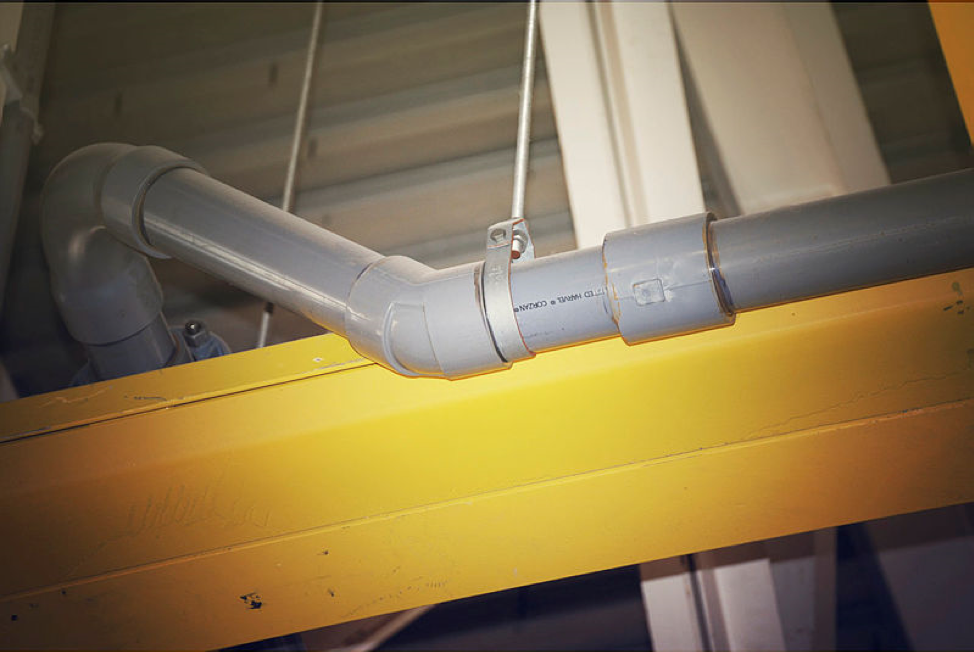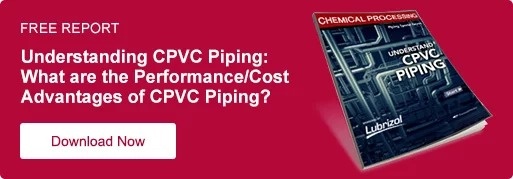Are You Overengineering Your Piping System?
Industrial piping design engineers are naturally cautious people. They like to feel confident that the system they install will operate safely and reliably over the long term.
Piping design engineers often have more than one set of specified conditions for the piping system’s temperature and pressure. These may include standard operating conditions, maximum operating conditions and design conditions. The temperature and pressure for the design conditions usually include a very aggressive set of circumstances that the engineer chooses so as to create a margin of safety that ensures the system will continue to operate reliably -- no matter what happens.
The designer may not be aware that the plastic pipe specified comes with a significant safety factor that has already been incorporated into the piping system. By adding an additional and possibly unnecessary safety factor with extra-aggressive design conditions, the system may require expensive options such as exotic alloys or FRP-reinforcement when ordinary plastic pipe could meet the application requirements for safety and reliability.
A Piping System Application Scenario
Lubrizol was recently approached with a chemical resistance inquiry regarding whether Corzan® CPVC can handle sodium hypochlorite at a concentration of maximum 12 percent. The maximum working conditions for this application were 106°F at 188 psig (41°C at 13 bar), with the design conditions specified for 130°F at 226 psig (54°C at 15.6 bar).
Corzan CPVC piping has sufficient chemical resistance for the above application scenario (please see the Corzan Pipe Chemical Resistance Chart). The following pipe sizes were calculated as having the necessary pressure rating:
According to ASTM F441 for the design conditions:
Schedule 80 pipe only in sizes 2.5” (63.5 mm) and smaller
Schedule 40 pipe only in sizes 1” (25 mm) and smaller
According to ASTM F441 for the operating conditions:
Schedule 80 pipe in sizes 8” (203.2 mm) and smaller
Schedule 40 pipe in sizes 3” (76.2 mm) and smaller
With both options, the pipe’s pressure rating already includes a safety factor of 2.0. ASTM F441 does not specifically state any design life span in its standard.
The pipe design engineer – for cost efficiency -- will likely want to consider the safety factor that is already built into the pipework for the different standards when deciding whether to increase the safety factor through design requirements. The question that must be decided is whether the safety factor included in the pipe’s pressure rating provides a sufficient margin of safety, or whether more aggressive design conditions should be used to increase the safety factor even more.
The Built-In Safety Factor for Plastic Piping
Plastic piping systems are pressure rated based on thousands of hours of test data. Detailed information about how piping systems are pressure rated may be found in the white paper “How CPVC Pipe Pressure Ratings Are Calculated,” which addresses factors such as testing methodology, calculating long-term hydrostatic strength, validating data, etc.
The calculations to determine the pressure rating of a plastic piping system already include a safety factor of 2 for pipes rated according to ASTM standards. This means the data actually predict that the pipe will remain operational for approximately twice its rated pressure during its lifetime.
The Corzan® CPVC Comparison Burst Test below shows the minimum pressure required before failure of 1” schedule 80 pipe compared to Corzan CPVC.
Industrial piping design engineers should be aware of the added safety factor for plastic piping rated according to ASTM standards and take it into consideration when analyzing operating conditions versus design conditions. A safety factor is not built into the temperature rating for plastic piping. If maximum operating conditions or design conditions truly require performance at temperatures that exceed the material’s rated temperature, the design engineer should consider an alternate material.
Learning About the Safety Factor Incorporated into Plastic Piping Systems
For details about the safety factor already incorporated into Corzan CPVC piping systems, contact a Lubrizol partner manufacturer or a Corzan CPVC System Consultant for a free technical consultation. Lubrizol’s product and technical support is backed by 60 years of CPVC experience.


